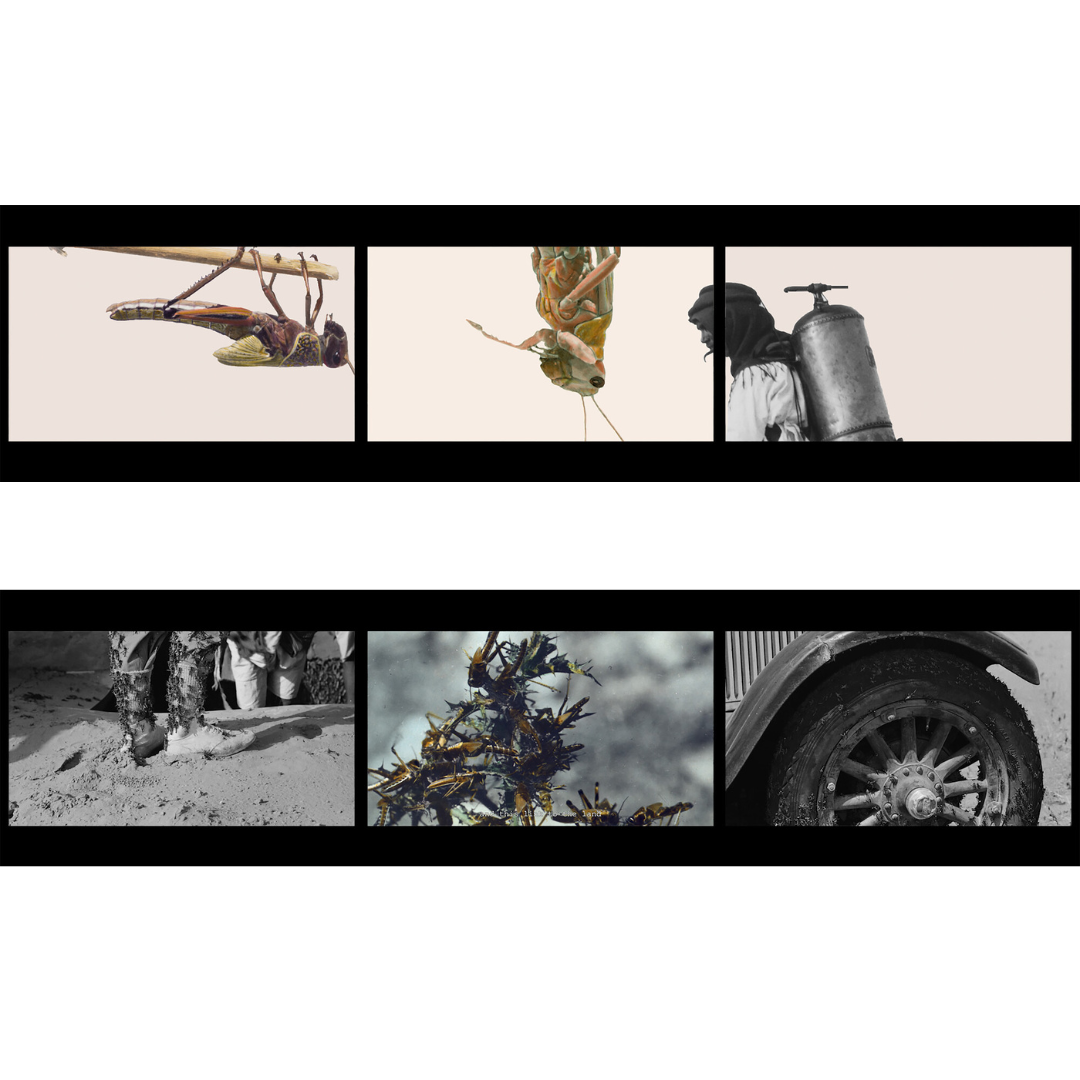Jessica Pilla
CentralJersey.com, February 18, 2025
The Artist Dor Guez Examines the Layered Histories of Jerusalem at the Princeton University Art Museum
 PRINCETON, NJ – The Jaffa-based artist Dor Guez’s penetrating transformations of early twentieth-century photographs of Jerusalem will be the subject of a thought-provoking exhibition at the Princeton University Art Museum’s galleries at Art@Bainbridge. The exhibition, titled Colony / Dor Guez, opens December 10, 2022, and will be on view through February 12, 2023.
PRINCETON, NJ – The Jaffa-based artist Dor Guez’s penetrating transformations of early twentieth-century photographs of Jerusalem will be the subject of a thought-provoking exhibition at the Princeton University Art Museum’s galleries at Art@Bainbridge. The exhibition, titled Colony / Dor Guez, opens December 10, 2022, and will be on view through February 12, 2023.
Colony / Dor Guez brings together photography, film, and installation works the artist created from five years of research in the archives of the American Colony, a charitable Christian community of Americans and, later, Swedes established in Jerusalem in 1881. In the first decades of the twentieth century, the artists of the American Colony created hundreds of photographic views of Jerusalem and its surroundings that they disseminated to an international audience eager to see the sites that, described in Jewish, Christian, and Muslim texts, came to be known as the Holy Land. Guez transforms these historical photographs, exploring the ways that photography was employed to construct an image of the region.
“The powerful work by Dor Guez is a potent and visually arresting rejoinder to the idea that histories are ever settled,” said James Steward, Nancy A. Nasher–David J. Haemisegger, Class of 1976, Director of the Princeton University Art Museum.
In the titular work of this exhibition—Colony, a three-channel video and sound installation—a narrator recounts a tale of feast and famine, interweaving details of a plague of locusts that descended on Egypt, Syria, and Palestine from March to October of 1915 with stories from the Bible. Guez, working from pictures created by the American Colony to document the 1915 locust plague for Ottoman and British imperial authorities, has cropped, sequenced, and choreographed images across a triptych of screens to create a parable that, in spanning modern and ancient times, suggests that these stories of the past might also provide an allegory for the present.
In another series made in response to photographs of the locust plague, Guez focuses on the doubled pictures of stereo photographs. Stereo views place two identical images flush with one another such that, when viewed through a set of lenses, they create an illusion of deep space. Guez became interested in the symbolic resonances of a set of glass-plate negatives documenting the locust plague that had been damaged in a flood in the 1970s. Underscoring how the latter natural disaster occludes images of the first, Guez replicates pictures taken to document the plague then mirrors the picture along the edge where the image was lost due to the effects of the flood, creating compositions with the form of a Rorschach test. This effect lends a psychological or conceptual symbolism to the photographs, merging the documents of the two natural disasters and underscoring the subjectivity of both photography and archives in representing historical events.
Guez was born in Jerusalem to a Palestinian family from Lydda on his mother's side and Jewish immigrants from North Africa on his father's. His work—often exploring relationships among art, narrative, memory, and displacement—has been featured in numerous solo exhibitions and is included in several international public collections, including the Tate Modern, London; Centre Pompidou, Paris; Guggenheim Abu Dhabi; The Los Angeles County Museum of Art; Jewish Museum, New York; Rose Art Museum, Brandeis University; and the Museum of Modern Art, Bogota.
###
About Art@Bainbridge
Art@Bainbridge is a gallery project of the Princeton University Art Museum. It is housed in the carefully restored colonial-era Bainbridge House at 158 Nassau Street in downtown Princeton. Admission is free. Art@Bainbridge is made possible through the generous support of Virginia and Bagley Wright, Class of 1946, Program Fund for Modern and Contemporary Art; the Kathleen C. Sherrerd Program Fund for American Art; Joshua R. Slocum, Class of 1998, and Sara Slocum; Rachelle Belfer Malkin, Class of 1986, and Anthony E. Malkin; Barbara and Gerald Essig; Gene Locks, Class of 1959, and Sueyun Locks; and Ivy Beth Lewis.
About the Princeton University Art Museum
With a collecting history that extends back to 1755, the Princeton University Art Museum is one of the leading university art museums in the country, with collections that have grown to include more than 113,000 works of art ranging from ancient to contemporary art and spanning the globe. Committed to advancing Princeton’s teaching and research missions, the Art Museum also serves as a gateway to the University for visitors from around the world.
The main Museum building is currently closed for the construction of a bold and welcoming new building, designed by Sir David Adjaye in collaboration with executive architects Cooper Robertson and slated to open in late 2024.
Art on Hulfish is open daily in downtown Princeton at 11 Hulfish Street. Art@Bainbridge is open Tuesday through Sunday at 158 Nassau Street in downtown Princeton. Admission to both galleries is free. Please visit the Museum’s website for digital access to the collections, a diverse portfolio of programs, and details on visiting our downtown galleries. The Museum Store in Palmer Square, located at 56 Nassau Street in downtown Princeton, is open daily, or shop online at www.princetonmuseumstore.org
Museum in the News
-
-
Ana Vidal Egea
El País, February 16, 2025 -
TRIS McCALL
NJArts, December 17, 2024 -
Adam Schrader
ArtNet, July 29, 2024 -
Ann McCoy
The Brooklyn Rail, October, 2024
Recent Press Releases
-
February 21, 2025
-
January 27, 2025
-
September 18, 2024
-
August 28, 2024
-
July 26, 2024
